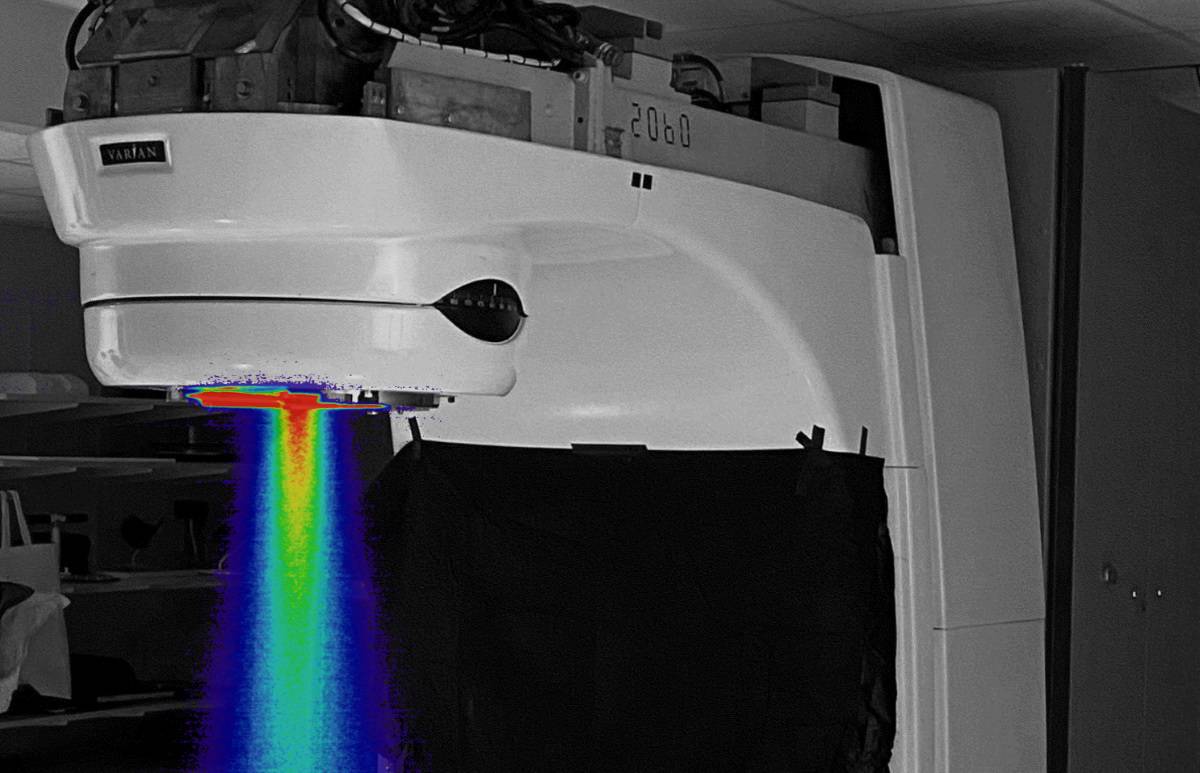

Metz says it was this unique arrangement that enabled the team to perform their new FLASH experiments. The Roberts Proton Therapy Center is one of the few facilities in the world to include a research room dedicated to running experiments such as these, where photon and proton radiation techniques can be tested alongside one another in close vicinity to the clinic. “We have designed and dosimetrically validated a FLASH-PRT system with accurate control of beam flux on a millisecond time scale and online monitoring of the integral and dose delivery time structure.” The Roberts Proton Therapy Center Since standard detectors are rapidly saturated by high levels of radiation, Metz and team developed apparatus that would measure radiation doses quickly and effectively: Now, the study by Metz and the team shows that with technical modifications, proton accelerators can generate the dosage needed to exert the desired biological effects. Novel nanozyme protects bones against damage from radiation.FLASH radiotherapy may hold promise as a potential treatment for tough-to-kill tumors.The QCOVID4 algorithm developed using data from the Omicron wave identifies those at highest risk of severe COVID-19 outcomes.Other research teams have also tried to deliver radiation using conventional photons, but todays devices cannot produce the required dosage. Other research groups have managed to deliver similar radiation doses using electrons, notes Metz, but this does not penetrate deep enough to target internal tumors. Metz, University’s Roberts Proton Therapy Center

This is the first time anyone has published findings that demonstrate the feasibility of using protons - rather than electrons - to generate FLASH doses, with an accelerator currently used for clinical treatments," Using a mouse model of pancreatic tumors, the team demonstrated FLASH PRT inhibited tumor growth as effectively as traditional photon radiation, whilst sparing healthy tissue. “Here, we describe a novel RT apparatus that delivers FLASH proton RT (PRT) using double scattered protons with computed tomography guidance and provide the first report of proton FLASH RT-mediated normal tissue radioprotection.” The feasibility of using protons rather than electrons However, “proton radiation therapy (PRT) can improve spatial dose delivery compared with photons or electrons,” write Metz and team.

Recent studies have suggested that, compared with conventional-dose rate electron radiotherapy (RT), a technique called FLASH electron RT decreases normal tissue damage, while maintaining tumor response. Image Credit:Mark_Kostich/Īs recently reported in the journal International Journal of Radiation Oncology, Biology, and Physics, James Metz and colleagues used proton radiation to generate a radiation dosage that, technically, would be enough to give a patient their entire course of radiotherapy all in one go. Researchers at the University of Pennsylvania have demonstrated that a new approach to delivering radiation could one day mean that cancer patients will be able to receive their entire course of radiotherapy within less than a second as opposed to several weeks.


 0 kommentar(er)
0 kommentar(er)
